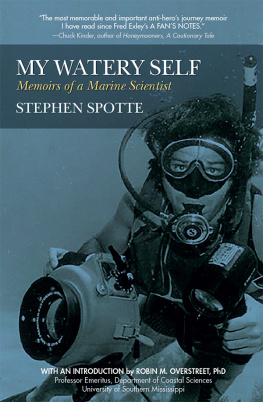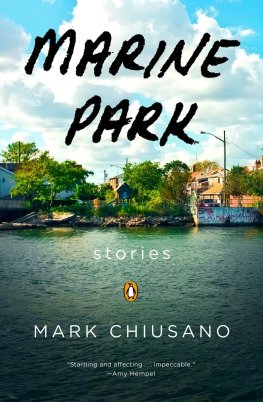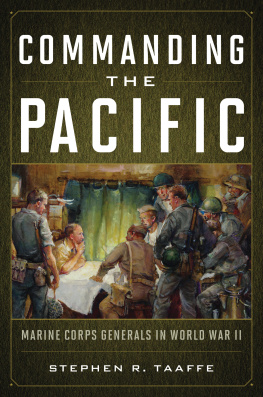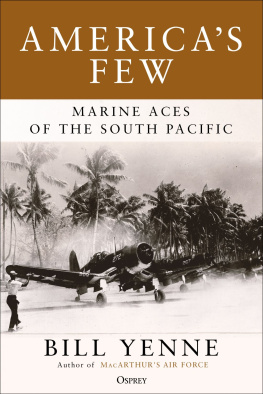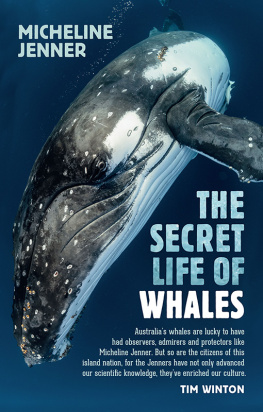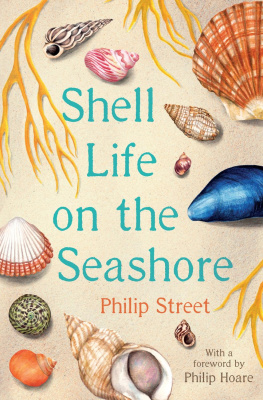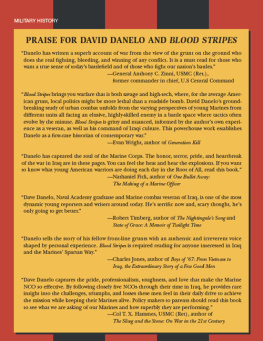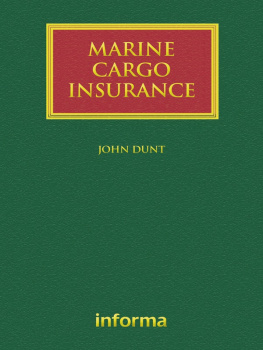MY WATERY SELF
Memoirs of a Marine Scientist
STEPHEN SPOTTE
THREE ROOMS PRESS
NEW YORK
My Watery Self: Memoirs of a Marine Biologist
by Stephen Spotte
Copyright 2015 by Stephen Spotte
All rights reserved. No part of this book may be reproduced in any form or by any electronic or mechanical means, including information storage and retrieval systems, without permission in writing from the publisher, except by a reviewer, who may quote brief passages in a review. For permissions, please write to address below or email . Any members of education institutions wishing to photocopy or electronically reproduce part or all of the work for classroom use, or publishers who would like to obtain permission to include the work in an anthology, should send their inquiries to Three Rooms Press, 51 MacDougal Street, #290, New York, NY 10012.
ISBN: 978-1-941110-16-4
Library of Congress Control Number: 2014951135
Cover and interior design:
KG Design International
www.katgeorges.com
Three Rooms Press
New York, NY
www.threeroomspress.com
Distributed by:
PGW/Perseus
www.pgw.com
To tell you the truth, Im only happy when Im my watery self. When I fall asleep in that state, Im spared the trouble of dreaming. For water has no past.
MIA COUTO
Under the Frangipani
Introduction
STEPHEN SPOTTE, PHD, PROBABLY BEST considered a marine scientist, can certainly be portrayed as a renaissance man extraordinaire. He continues to perform brilliantly in many different fields. As Ella Fitzgerald sang, Things may come, and things may go, but this is one thing you ought to know: Taint what you do its the way that you do it. Perhaps he should be characterized by his questioning of why and how. For those readers who know Steve or his scientific works and would like to know more about him, My Watery Self is that opportunity.
Most of his many accomplishments, both peer-reviewed and popular scientific as well as fictional, are published prolifically in a variety of sole-authored books. Lists occur at the end of this introduction. All are well written and packed with material useful for presenting lectures. I know, because I included much of his explained information for maintaining fishes and invertebrates in both his early (1970, 1973) and later (1992) tomes in some of my own lectures and research. His complete taxonomic, biological, and public health presentation on the many species of small South American catfishes, some of which enter the urethras of people while urinating in the streams, makes for memorable discussion on vertebrate parasites of humans. Whatever he writes about, he sneaks in a wonderful phrase to explain any feature.
In his scientific life, he seems to jump from one topic or field to another. This life has been guided by his interests (aquaculture, aquarium technology, husbandry and disease of captive marine mammals and fishes, marine environmental physiology, and coral reef ecology) and marine and freshwater field experiences in his travels to Brazil (Rondnia, Roraima, Amazonas); Canadian lower arctic (Hudsons Bay); Alaska (Bering Sea); Canadian Maritime Provinces; Ecuador; California; Pacific Northwest (Oregon, Washington, British Columbia); Mxico (both coasts); Florida Keys and northern Gulf of Mexico; New England; Central America (Atlantic coast); British, French, and Dutch West Indies; US and British Virgin Islands; Philippines (South China Sea, Sulu Sea); and wow! South Pacific (Cook Islands, French Polynesia, Solomon Islands). He even holds a US Merchant Marine officers license.
He started publishing in the scientific literature by providing technical information necessary to maintain fledgling public aquaria, including that involving husbandry and health of marine mammals. Not only did he conduct research, but he curated the Aquarium of Niagara Falls, Niagara Falls, New York, and New York Aquarium, Wildlife Conservation Society, Brooklyn, New York; served as Executive Director of the Mystic Aquarium, Mystic, Connecticut; and Vice President of Aquarium Systems, Inc., Mentor, Ohio.
He got the itch to study biodiversity and symbiosis of tropical organisms in the wild, so he became Director and Principal Investigator of the Turks and Caicos Islands Coral Reef Ecology Program funded through the Oakleigh L. Thorne Foundation in New York City. During his trips, he ran the Foundation to survey the area, working hard every day and keeping his employees in line. He is well known for being hardnosed about productivity and maintaining safety of the scuba divers. There was considerable deep diving and underwater photographing, and Steve became a world authority on commensal shrimp before moving on to his next adventure. Actually, at the same time he became Director of Research, Sea Research Foundation, Noank, Connecticut, and Research Scientist, Marine Sciences & Technology Center, The University of Connecticut at Avery Point, Groton, Connecticut. Since 2001 he has been Adjunct Scientist, Mote Marine Laboratory, Sarasota, Florida. While in Florida, he decided to create a home garden but encountered some difficulties. So what did he do? He shared his acquired knowledge in a book (Coastal Florida Gardening: A Botanical Perspective).
Because of his widespread knowledge about constructing public aquaria and maintaining living displays, he has used his business acumen in consulting. He provided information for well-known public aquariums in ten states as well as for ventures in four countries abroad. His efforts have also had a significant positive impact on entertainment displays. For a few months, Steve visited Mississippis Gulf coast to design a system for Donald Trumps envisioned dolphinarium. Although plans fell through, I was fortunate enough to share lunches, laughs, and ideas during those trips.
Much of Steves success results from considerable effort. He does not waste time; he is always productive writing, investigating, inventing, or appreciating. Born in 1942, he grew up in a coal mining camp in southern West Virginia, learning life from close associations with people and activities there and aboard boats, in jungles, on beaches, in aquaculture facilities, in the research laboratories, and behind his typewriter or computer.
I first met Steve early in his career when he curated aquariums. Later, when I presented a scientific talk in Groton, I finally got the opportunity to visit him at his home. He asked where I would like to eat. In a joking fashion I said, Mystic Pizza because I had enjoyed the 1988 movie starring Annabeth Gish. He said, Grab your coat, and, to my astonishment, we walked around the corner to where there existed an actual Mystic Pizza; Steve personally knew all the employees in that quaint little restaurant with its entrance to the kitchen on the opposite side as it occurred in the movie.
Steve is certainly never afraid to expose his weaknesses. He does this in My Watery Self, as he did in The Smoking Horse. More important, he shows his strong love of life, including music, literature, science, and history. He always digs to the depths of any of those foundations, which necessitates a firm knowledge of the participants of each field on a first name basis acquired in the field, workplace, bar, or neighborhood.
Most scientists do not write memoirs, especially ones that might make the reader wonder, with all the associated wild experiences with alcohol and chemicals, how the biographer ever became a bonafide professional scientist. This book follows The Smoking Horse, with a spectrum of thrills. Young potential scientists today must get involved with marine science through a good education rather than random experiences. I know; I entered the field slowly, being spurred into action by reading
Next page
